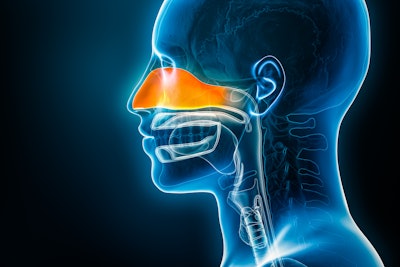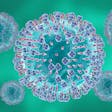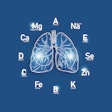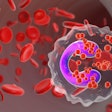
Not all nasal “junk” is alike. In the new study, “The Nasal Mycobiome of Individuals With Allergic Rhinitis and Asthma Differs From That of Healthy Controls in Composition, Structure and Function,” Portuguese researchers found significant differences in the nasal fungal communities between individuals with allergic rhinitis, asthma and healthy controls. The study was published in the journal, Frontiers in Microbiology.
Although the nasal bacteriome's role in these conditions is well-documented, researchers said the nasal mycobiome (fungal community) remains underexplored. This research demonstrates fungal communities in the nasal cavity play a significant role in chronic respiratory diseases such as asthma and allergic rhinitis.
Researchers used high throughput sequencing to characterize the nasal mycobiomes from the nasal swabs of 339 participants from northern Portugal, including children and adults with allergic rhinitis, allergic rhinitis with asthma, asthma and healthy controls. They employed internal transcriber spacers (ITS) 1 and 2 to analyze fungal DNA and performed extensive data analysis to compare fungal diversity, composition and functional capabilities across the different clinical groups.
Key findings from the study revealed:
- Diverse fungal genera: The study identified 14 dominant fungal genera, including Malassezia, Alternaria, Cladosporium and Penicillium. Seven to 10 of these genera showed significant differences between allergic rhinitis, allergic rhinitis with asthma, asthma and healthy control groups.
- Intragroup diversity: Patients with allergic rhinitis and allergic rhinitis with asthma exhibited the highest intragroup diversity in their nasal mycobiomes, while healthy controls had the lowest diversity.
- Metabolic pathways: Thirty metabolic pathways were different and abundant between allergic rhinitis or allergic rhinitis and healthy control patients. Notably, pathways associated with 5-aminoimidazole ribonucleotide (AIR) biosynthesis were overabundant in the allergic rhinitis with asthma group, suggesting a potential link to fungal pathogenesis.
- Fungal networks: The study found that chronic respiratory allergic diseases might disrupt fungal connectivity in the nasal cavity, with allergic rhinitis and allergic rhinitis with asthma showing more similar interactions among their fungal communities compared to healthy controls.
Allergic rhinitis and asthma are prevalent chronic respiratory diseases that impose a significant health and economic burden. This research, conducted by a team of scientists from the ASMAPORT Project, highlights the nasal mycobiome's role in these conditions. By identifying specific fungal taxa and metabolic pathways associated with allergic rhinitis and asthma, researchers hope to develop targeted therapies to manage and treat these diseases more effectively.






















